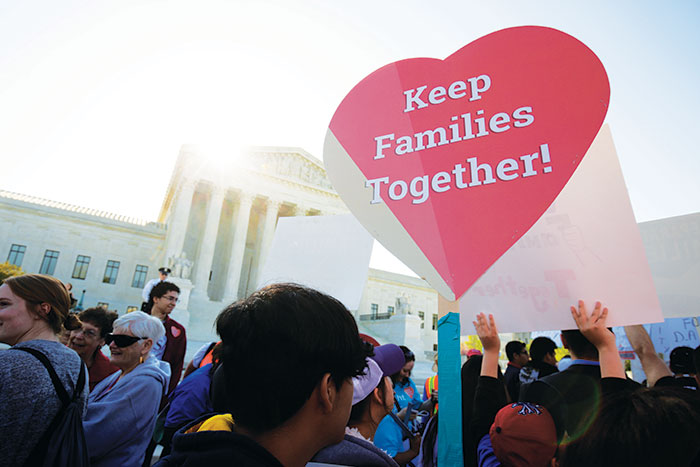
Last week immigrants, their families and legal advocates rallied outside the Supreme Court as eight justices heard oral arguments in United States v. Texas, an immigration case concerning the Obama Administration’s Deferred Action for Parents of Americans and Lawful Permanent Residents (DAPA) program, which would have offered deferred action status and work authorization to nearly 4 million unauthorized immigrants.
Based on the photos and news coverage of the demonstrators, the working parents, restaurant owners and other small business and household employers who break immigration laws by hiring unauthorized immigrants were, as usual, noticeably absent.
Too often immigration is seen as a problem for immigrants and their families. But if you hire someone to care for a family member at home, buy produce at the grocery store, eat out at a restaurant or have your house cleaned, the fight to legalize the status of unauthorized workers is your fight, too.
According to the most recent data, gathered in 2012, 8.1 million of the estimated 11.3 million unauthorized immigrants were employed. They represented 5.1 percent of the workforce.
Some of the industries with the highest numbers of unauthorized immigrant workers include landscaping services, private households, crop production, dry cleaning services, construction and eating and drinking establishments. Thus, many Americans benefit from the work of unauthorized immigrants either because they employ these immigrants illegally or because the goods and services they consume are made cheaper by the use of unauthorized immigrant labor.
Unauthorized immigration and the hiring of unauthorized immigrants is a kind of workaround against immigration laws that do not reflect labor demands. As Americans have become older and more educated, the demand for lower-skilled workers, namely workers in occupations that do not require a high school diploma, has been met by immigrants.
Yet lower-skilled workers only qualify for a handful of Visas that would allow them to work lawfully in the United States, in part because immigration laws favor family immigration and higher-skilled temporary workers.
The lack of sufficient channels of lawful entry for lower-skilled workers makes it difficult for them to stand in line and wait their turn for legal entry and difficult for employers who need lower-skilled workers to find workers authorized to work, which results in rule breaking by both parties.
If so many people are breaking the law — both immigrants and U.S. citizens — it begs the question: are bad laws happening to good people? Yes, and everyone implicated by these laws should be fighting to fix them.
Fixing immigration laws to provide legal status to individuals already working in the United States could result in higher wages and more rights for people who are currently unauthorized to work. And yes, even those who support immigration might worry that higher wages could make it more expensive to go out to eat or tackle projects like remodeling a kitchen.
But not fixing our laws because of wage concerns would mean a tacit endorsement of black market wages and the hiring of cheap immigrant labor over more expensive U.S. workers.
A focus solely on enforcement, which some candidates have called for, will not effectively disrupt the demand for immigrant labor or deter rule breaking. We simply do not have the financial resources or personnel — nor does it make sense — to deport 11.3 million people, build a wall across a nearly 2,000-mile border with Mexico or go after restaurant owners, working parents, cooks, nannies or roofers.
This is not an indictment of people who hire unauthorized workers. Instead, it is a call to action. It’s time to broaden the coalition and demand that politicians offer solutions that fix our immigration laws so good people — immigrants and citizens alike — do not feel compelled to break them.
-Uzoamaka Emeka Nzelibe is a clinical assistant professor at the Northwestern Pritzker School of Law. This article, which originally appeared on Reuters, was edited by The AANews for space and style.






Leave a Reply